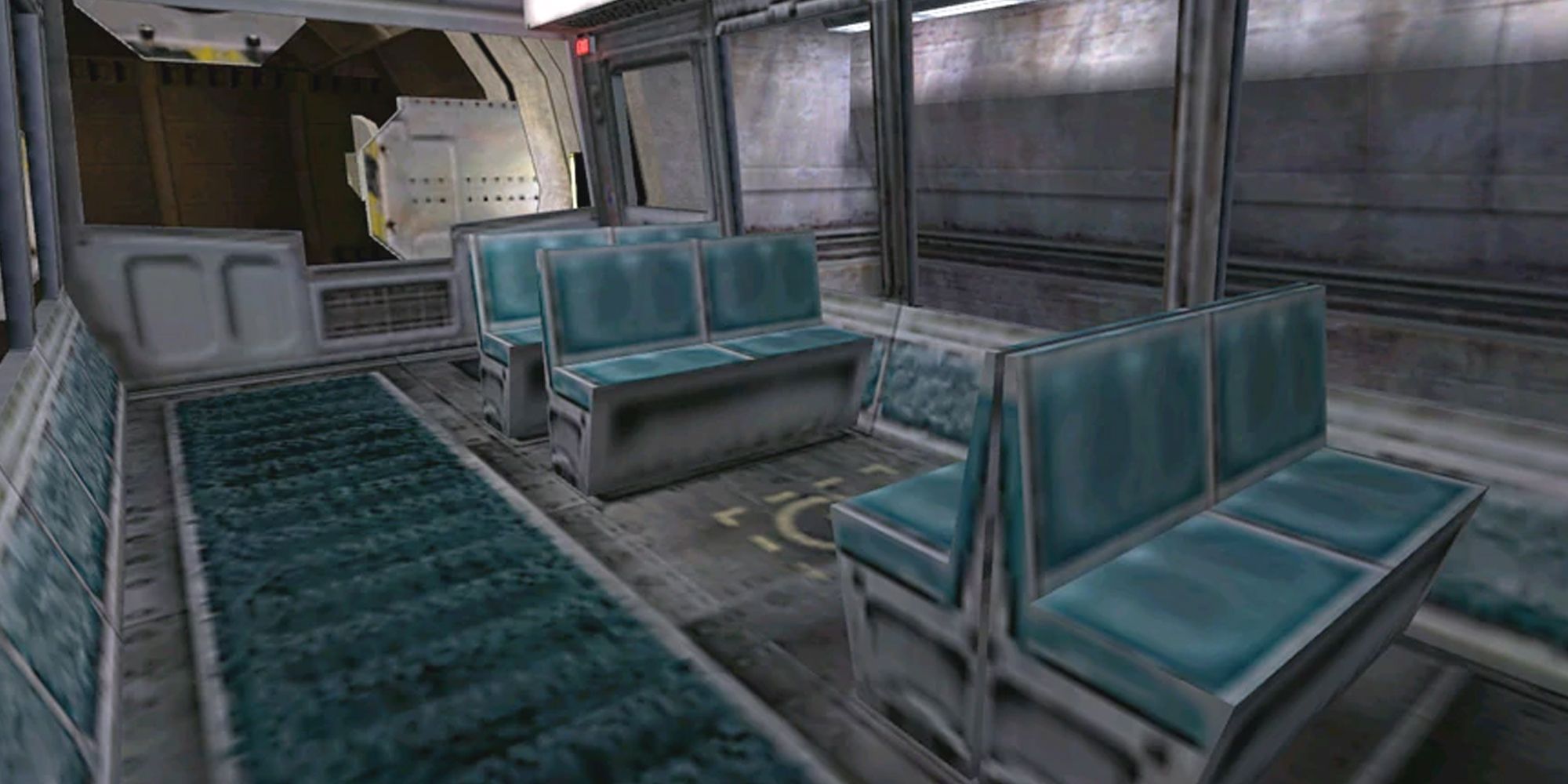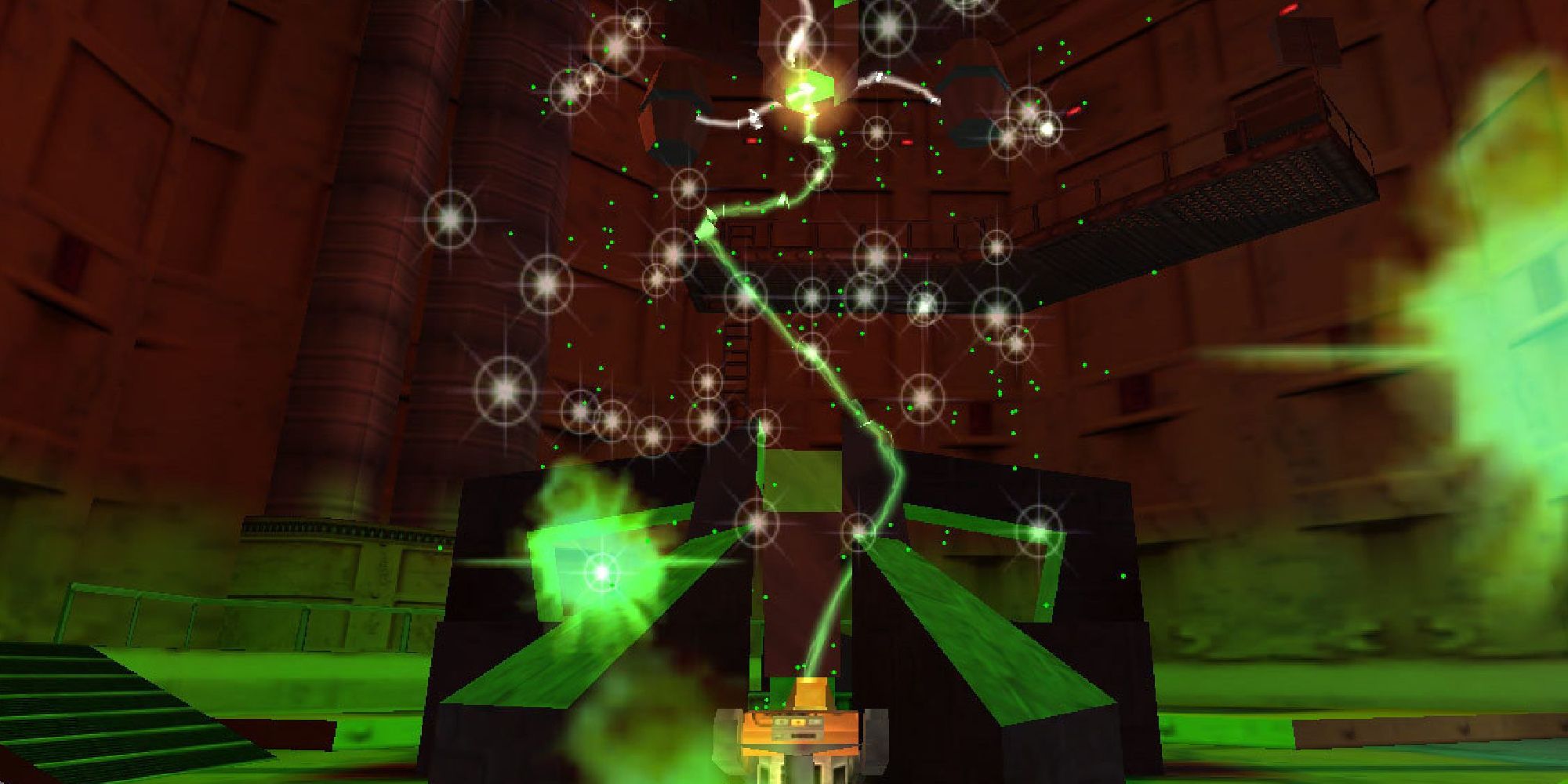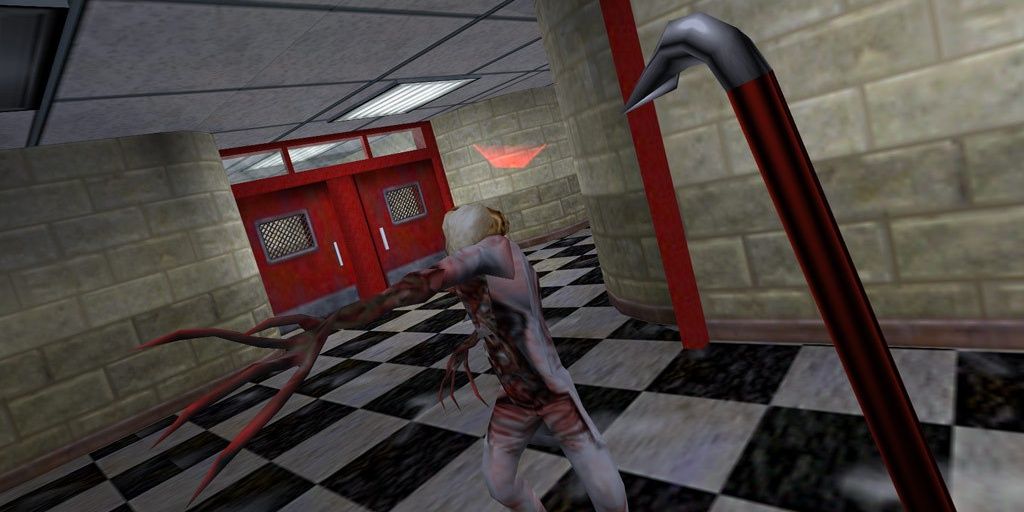Half-Life came out at a time when FPS’ were mostly arcade-style arena shooters with little story that threw you into enemies for the fun of it. Instead of following the mold, Half-Life reshaped what an FPS could be, starting you on a tram ride where you take in the scenery of Black Mesa before all it goes to shit. You get to see scientists tapping away on their computers, big robots lifting heavy cargo, and, in Blue Shift, employees hanging out at the cafeteria. All this paves the way for the moment in which everything collapses, with the bright lights swapped out for dingy backups, the scientists now cowering, dead, or zombified, and the whole facility in ruins as it continues to fall apart.
The horror of seeing everything in disarray has a much larger impact because we previously see everything when it’s pristine. The tram ride introduces us to a working, top-of-the-line secret facility, while also giving a sense of its size by taking us from one end to the other, even featuring some locations that we’ll end up backtracking to over the course of the game. Take the moment where we quickly see the New Mexico desert with a military helicopter on a landing pad, readying for takeoff. On your first playthrough, it’s little more than an innocuous set piece, but going back, it’s an ominous foreshadowing of the helicopter fight on the cliffs outside.
A shooter opening without any shooting was an incredibly bold move at a time, especially when the most popular releases were Doom, Quake, Wolfenstein, and Duke Nukem, but Valve did it anyway. The intercom is reading out mundane details about the weather, with safety information that’ll be thrown out the window with every scientist stuck on one of these death machines when the aliens come knocking. Details about our protagonist, Gordon Freeman, pop up on screen - he’s late to work, and all of this only takes around five minutes. It’s not that long, but it sets the stage in a way few games manage to.
There’s not enough of this in modern disaster games. 2016’s Doom opens with everything already falling apart. We’re resurrected and immediately thrust into a nostalgic ‘90s-style arena shooter. It does little to make you care for the Martian facility that you’re ripping and tearing through. Then there’s the more recent Callisto Protocol, which only briefly features the prison in working condition, instead opting to spend the quieter moments on a small dark ship. I’d have loved to walk around the mess hall, meet other prisoners, and spend a little longer taking it all in before the infection spread.
It doesn’t need to be literally on-a-rail, as even Half-Life has a whole chapter after where you still don’t fight anything, instead spending time exploring the facility in its prime, speaking to scientists, and spotting a G-Man or two. But the general concept of being introduced to a world before its collapse is what more games should explore. It’s something that is fading into obscurity, with players being rushed to get into the action. The best example of it in modern games is Fallout 4, which is turning eight next year - sorry to make you feel old.
Half-Life’s collapse wouldn’t be half as memorable if it wasn’t for the fact we got to bump heads with all those scientists before it happened. “Big day today Freeman,” you don’t know the half of it. “I am rather looking forward to this analysis, aren’t you?” Nope. “Yes, this all looks nominal.” Does it, really? Really? The dark comedy underneath it all just makes for an even better second playthrough, seeing everyone act so casually before they usher in what will nearly end the human race as a whole.
More than that, it adds to the tragedy. A huge part of the dystopian downfall is seeing familiar settings collapse, as humans forgo basic civility, doing anything to survive. Just look at The Walking Dead, The Mist, Cloverfield, and so many other disaster movies and shows, where once friendly neighbours start killing each other for scraps. Half-Life is up there with them for its depiction of civilisation’s downfall, with the military’s clean-up operation being even more grotesque than the alien invasion, and more games could learn from it all these years later.



